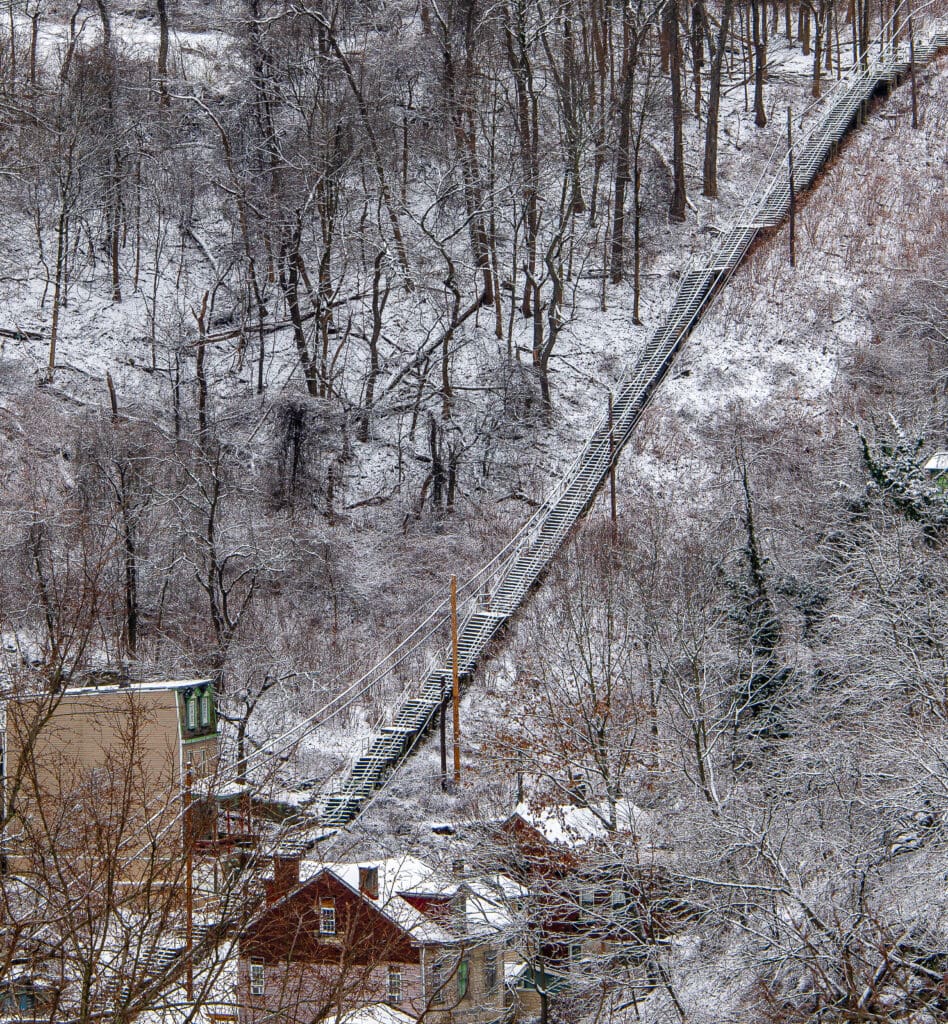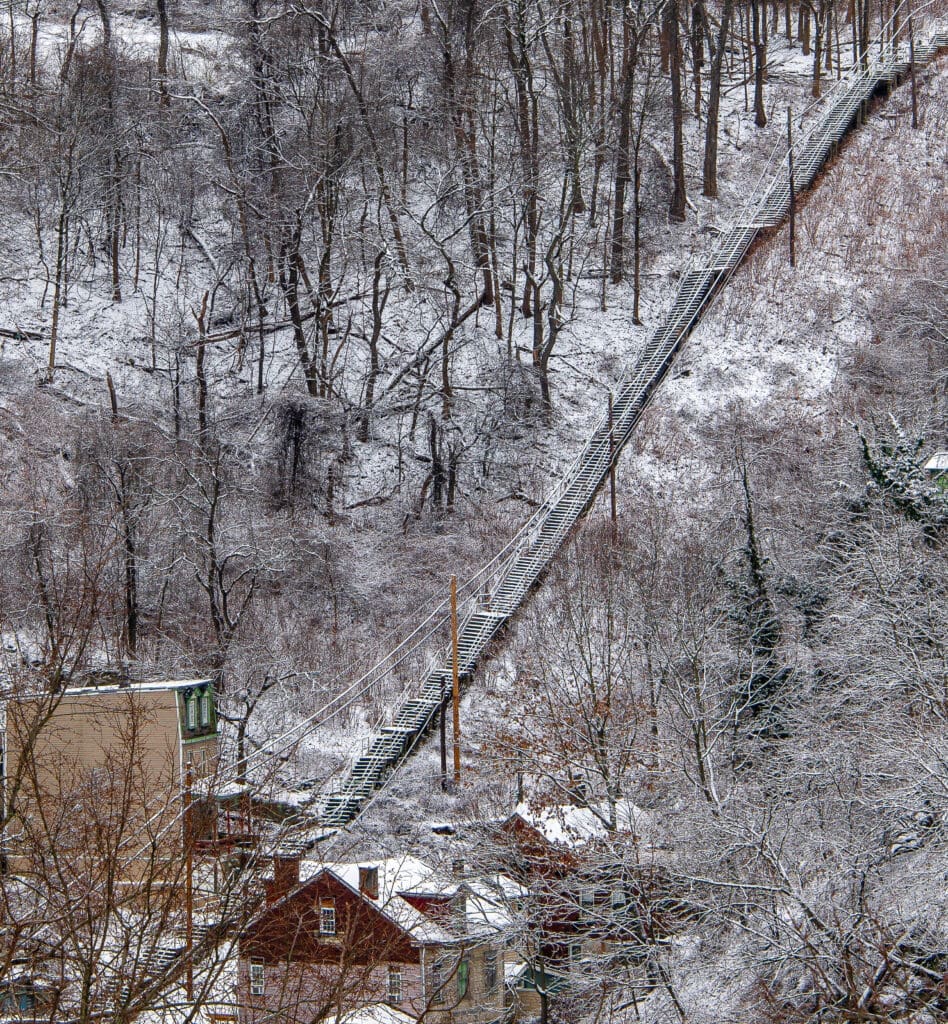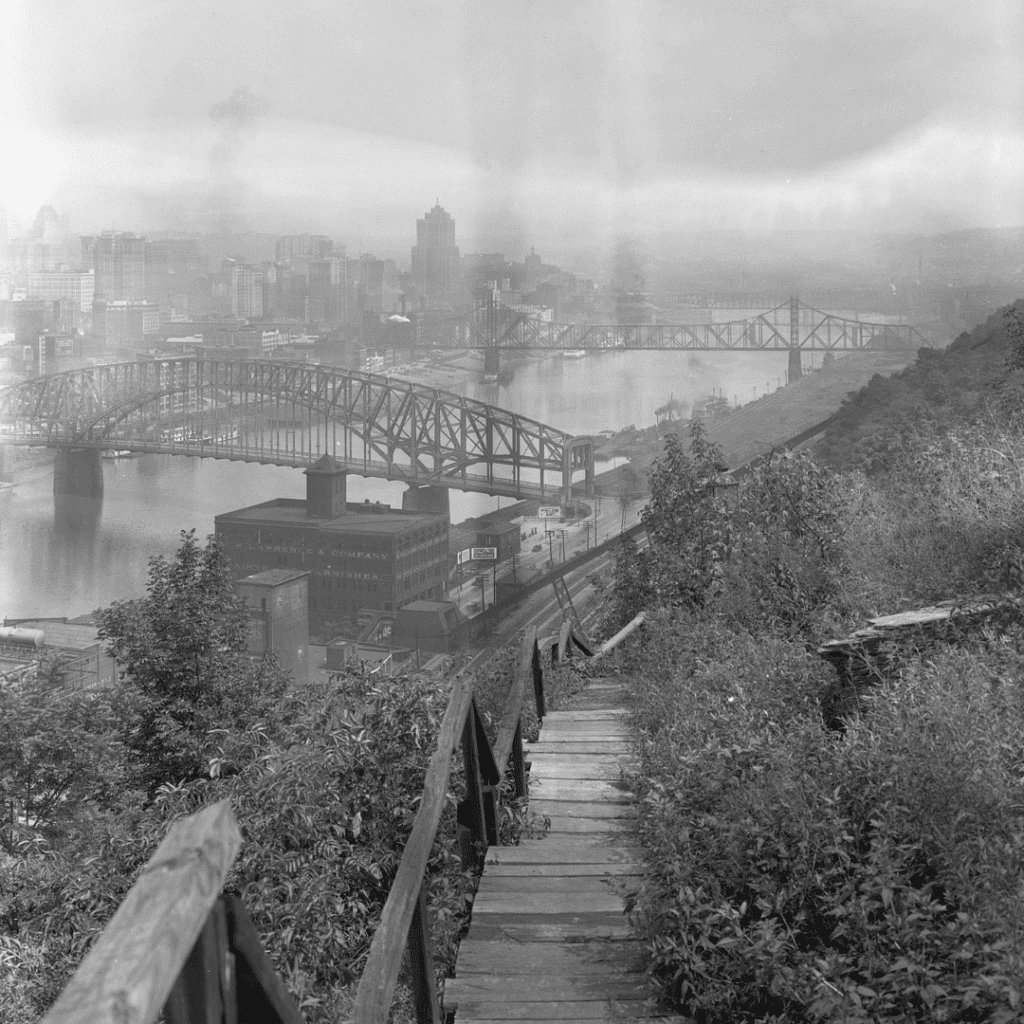Strolling Pittsburgh’s Historic Public Stairways


By Laura Zurowski
Pittsburgh’s public stairways are integral to town’s historical past and some extent of civic and neighborhood satisfaction. They embody Pittsburgh’s historical past, romance, intrigue, and vitality; their presence gives a uniqueness that units it other than different cities. These large flights of concrete and metal provide guests and locals a built-in technique to journey between neighborhoods, train, and join with others.
Pittsburgh, a metropolis that was as soon as residence to a thriving inhabitants and enormous industrial complexes, developed its distinctive transportation system within the nineteenth and twentieth centuries. These public stairways, domestically often called ‘metropolis steps,’ had been a necessity in a time when motor autos weren’t but ubiquitous. They had been a lifeline for a lot of residents, enabling them to reside inside strolling distance of town’s main industries.
Pittsburgh First Mass Transportation System
As Pittsburgh’s inhabitants grew within the late 1800s, the necessity for dependable transportation programs grew to become obvious. Whereas omnibuses and trolleys had been accessible, the charge to trip was usually past what new arrivals and laborers may often afford. The town’s hilly terrain additionally posed a problem, however the resolution got here within the type of public stairways. The town started establishing lengthy flights of picket stairways within the 1870s, and by 1937, over 13 miles had been accessible, with extra flights of metropolis steps being constructed yearly.
Increase, then Bust
As World Warfare II ended, Pittsburgh Metropolis Council members and Mayor Cornelius D. Scully proactively began planning post-war infrastructure updates, together with changing almost 100 flights of picket metropolis steps tormented by structural points. Concrete stairs with metal railings had been engineered and put in as they had been extra sturdy and had a life span ranging between 50 and 75 years. All through this time, newly constructed flights had been usually featured in native newspapers and celebrated by residents who marveled at their fashionable development.
Nonetheless, Pittsburgh’s glory days quickly ended. Beginning with the 1960 US Census, Pittsburgh’s inhabitants development ended, and the period of double-digit depopulation started. Residents left the city core for suburbs, and metal mills closed or relocated. As town’s inhabitants declined from 700,000 to 300,000, Pittsburgh’s pure world aggressively reasserted itself into areas not inhabited. Though constructions and streets steadily disappeared, town steps remained, sustaining a Zen-like presence in a post-apocalyptic panorama.

Going Inexperienced with Metropolis Steps
In 2014, in search of methods to assist town shed its “smokey” metal trade picture, newly elected mayor Invoice Peduto tasked metropolis planners with conducting a citywide steps evaluation to gather information and pictures documenting every staircase’s location and situation. The town steps had been a part of Peduto’s plan to advertise environmentally pleasant transportation and supply mobility choices for the 20 p.c of residents with out autos.
In 2017, the Metropolis Steps Plan was launched. Via neighborhood conferences, subject visits, and survey collections, quantitative and qualitative information helped decide what flights had been crucial for accessing public transportation, colleges, grocery shops, hospitals, libraries, homes of worship, and most important avenue enterprise corridors. The plan helped systematize and prioritize the maintenance of metropolis steps in areas with the best want.
The primary of a number of large-scale metropolis steps rebuilding tasks was Joncaire Road in Central Oakland, close to the College of Pittsburgh and Schenley Park. Accomplished in late 2018, the brand new stairs had a decrease profile for simpler climbing, closed railings and enhanced lighting for security, an embedded bike runnel for cyclists, and stormwater and invasive species administration options. A number of newspapers, tv and radio packages, and social media platforms coated the grand opening of the steps. Whereas development types and communications media had modified significantly for the reason that late Forties, native curiosity within the metropolis steps was as enthusiastic as ever.
Exploring Pittsburgh via the Metropolis Steps
Whereas the times of residents strolling from “the hills to the mills” have disappeared into the previous, the steps have gained in recognition within the final a number of years. They provide an alternate type of public transportation and join hikers and cyclists to a rising community of designated trails and bike lanes all through town.
5 Enjoyable Info About Pittsburgh’s Metropolis Steps
- Pittsburgh has over 900 flights of metropolis steps scattered all through town’s 90 neighborhoods and three,800 acres of parkland and greenway trails.
- The town’s hilly terrain means each flight is custom-designed and distinctive.
- 344 flights of stairs are authorized streets, and plenty of have specifically designed avenue indicators. Within the early days of GPS programs, drivers had been generally misdirected to flights of stairs.
- Filmmaker Dean Lavatory’s The Greatest City Mountaineering is in Pittsburgh? gives a close-up view of metropolis steps with out lacing up your sneakers.
- The Western Pennsylvania Regional Knowledge Middle’s Metropolis of Pittsburgh Steps and the Pittsburgh Metropolis Steps Fb group present particulars and encouragement for creating your individual metropolis steps journey.
Laura Zurowski is the creator of Mis.Steps: Our Missed Connections with Pittsburgh’s Metropolis Steps and co-author of Metropolis Steps of Pittsburgh: A Historical past & Information (The Historical past Press, 2024).
Shade pictures by Matthew Jacob
Historic photograph of the Indian Path stairs courtesy of the Pittsburgh Metropolis Photographer Assortment, 1901-2002, AIS.1971.05, Archives & Particular Collections, College of Pittsburgh Library System.